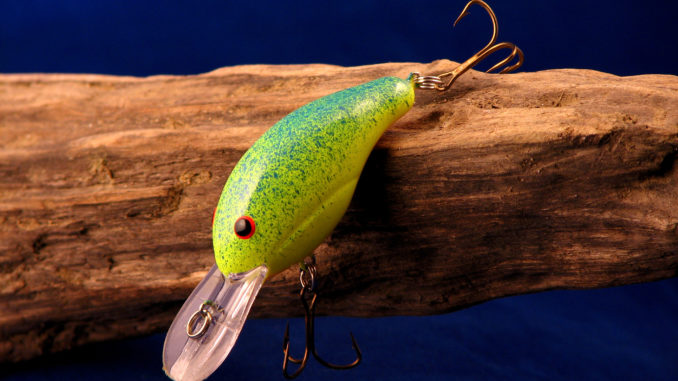
Learn importance of vibration, color of plugs
Alot of fishermen don’t think about fishing a crankbait in the spring, but except for the time when they’re on the bed, bass will hit a crankbait about as good as anything — if you know how to fish them. If you fish anywhere in the South, it’s one of the tools that you have to have in your tackle box.
One of the most-important and least-understood things about fishing a crankbait is that you have to feel the bait vibrating. It means everything, but a lot of fishermen don’t pay any attention to it. When you’ve learned what a crankbait is supposed to feel like, that’s when you can be a good crankbait fisherman.
When you can feel and recognize the vibration of a good crankbait, it makes it easier to feel a fish bite, especially a bite that’s fairly light. What you’re feeling is something different, the bait not moving and vibrating the same way it was two or three turns of the reel before. It’s not that difficult a concept; it’s no different from being able to feel a fish pick up a jig or a worm. You hear guys talking about that heavy or mushy feeling when a fish picks a bait off the bottom. It’s the same way with a crankbait. You feel a difference in the vibration the bait makes.
The next thing is which retrieve works best in the spring. Early in the spring, before the water temperature gets up in the high 50s and before the bass get really active, a really good way to retrieve a crankbait is to wind it down, then work it back to you by sweeping the rod tip to the side and taking up the slack, sweeping the rod and taking up the slack. It’s a little like the jerk-jerk-pause cadence of a jerkbait. The bait is suspending when you finish the sweep, and you’re taking up the slack.
Later in the spring, a good, steady retrieve works best. You are fishing for aggressive fish, fish that will bite your bait if you bring it past their noses. That’s when being able to feel the bait’s vibration is most important.
Third, you often cast crankbaits to targets in the spring. I’m not using a really long rod in April. Distance is important, but in the spring, you’re throwing at targets. I’ll fish a 6-foot-6 or 7-foot David Fritts Lews Perfect Crankbait Rod. It’s a 90/10 rod — 90 percent fiberglass and 10 percent graphite. Because of that 10 percent, you can fish it around cover and get a big fish out.
Because you’re casting at the corners of docks, at shallow stumps, running it alongside a laydown, you need to learn the right way to run it into a piece of cover. It’s human nature when you hit something to jerk the bait. That’s how we get hung up a bunch. What you want to do is be able to “pause” the crankbait. You want to be able to stop the bait as soon as you hit something, so that it quits vibrating. What I try to do when I hit a piece of cover is just lift my rod tip and try to get the bait to suspend and then float it up over the cover. Most often, the bass will hit the bait when it’s stopped and suspending or floating up over the cover. The bass thinks it’s stunned, and he wants to grab it before it gets away.
One other thing to think about: color. Crawfish is a great early spring color when the water’s cold and fish are concentrating on crawfish. Bluegill turns into a good color after the spawn when fish are protecting the bed. When fish are staging to spawn, water clarity can make a difference in the color you choose.
Whatever you do, pay attention to the fish that you catch on a crankbait. If you catch a bass that’s hooked on the back hook, that fish didn’t really like the color of your bait, but he hit it anyway. You need to change colors. You want that bait all the way down in his mouth. That’s how you know you’ve got the right color. He can see it well and he really wants it, so he swallows it.




Be the first to comment